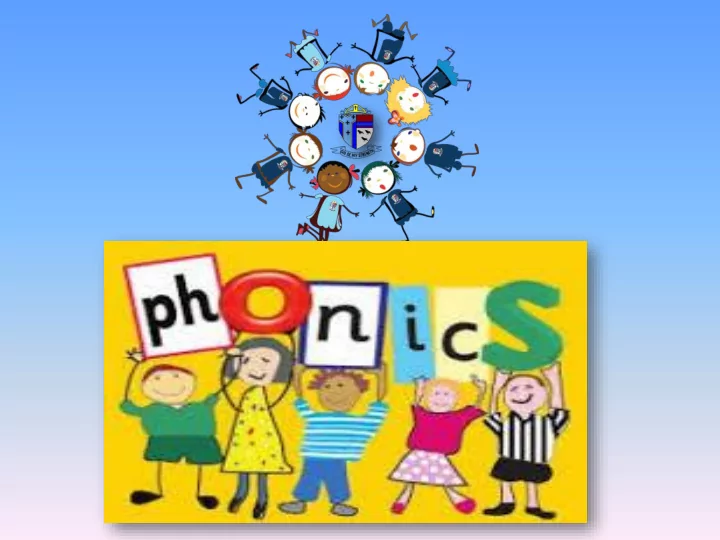

• Children are taught to read by breaking down words into separate sounds or ‘phonemes’. • They are then taught how to blend these sounds together to read the whole word. • Children are taught to spell by hearing a word and splitting it up into the sounds that make it. • This is called ‘segmenting’. Children then use their phonic knowledge to record the letters that represent those sounds in the correct order.
• Phoneme: The smallest unit of sound. There are approximately 44 phonemes in English (it depends on different accents). Phonemes can be put together to make words. • Grapheme: way of writing down a phoneme. Graphemes can be made up from 1 letter e.g. p, 2 letters e.g. sh, 3 letters e.g. igh • Blending: Children blend phonemes together to make a word e.g. r-u-n run • Segmenting: Children split the word into sounds to help them write it.
• Children have at least one 15 minute phonics lesson each day and they are encouraged to use these strategies to read and write in other lessons.
Introduction Objectives and criteria for success Revisit and Review Teach Practise Apply Assess learning against criteria
• Teaching of phonics is in 6 discreet phases. • As well as the sounds taught at each phase there are also high frequency words’. • Some of these words are decodable and some are considered ‘tricky words’. Children need to read these by sight and learn to spell them. • Eg. What, she, was
• Phase 1, looks at Environmental Sounds, Instrumental Sounds, Body Percussion, Rhythm and Rhyme, Alliteration, Voice Sounds and Oral blending and segmenting.
• Kinaesthetic approach: song, action and visual Jolly Phonics songs
Teaching phonics requires a technical skill in enunciation. Each phoneme needs to be articulated clearly and precisely. Each sound needs to be said sharply and clipped: “D” not “DER” “M” not “MER” for accuracy in blending. Articulation of phonemes
• Phase 2 introduces the first set of phonemes and teaches children to blend the sounds together to read whole words.
• Phase 3 teaches another 25 phonemes, most of which are digraphs (two letters making one sound e.g. oi) and some our trigraphs (three letters make one sound e.g. igh).
• Phase 4 teaches children to read and spell words with adjacent consonants e.g. jump or stamp and polysyllabic words (more than one syllable e.g. sandwich)
• Phase 5 teaches children alternative ways of representing sounds they already know e.g. in Phase 3 they learnt ow (cow) and in Phase 5 they will learn ou (loud).
• Hear it and say it – tuning in to the sound • See it and say it • Say it and write it
3 3 4
• Give children a number of pictures and words to match van jam jacket
sh, i, o, p , ck, f Ask children to write words you say.
Display a number of objects and children have to spot the odd one out.
• Use your child’s phonics book at home to practise sound recognition and reading of words by sounding out and blending. • Play phonics games with your child. • Here are some of our favourites: – Magnetic letters: Say a word e.g. jam. Children say the sounds and then find the magnetic letters to make the word. – Quickwrite: Say a word, children repeat it, say the phonemes and then children write it.
Encourage your child to ‘sound out’ when reading or writing. Help them to spot where more than one letter work together to make one sound. Digraph- 2 letters making one sound cow Trigraphs- 3 letters making one sound night Split vowel digraphs- 2 vowels with a consonant in-between. spine - i_e make - a_e
Recommend
More recommend